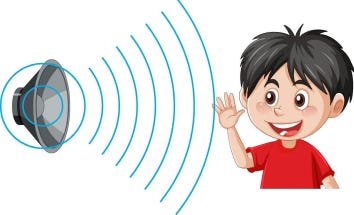No Small Groups? No Problem — Whole-Class Reading Fluency Tips
Reading Fluency in Today’s Classroom
Reading fluency is one of the most essential skills teachers can develop in their students—yet it remains one of the most challenging to teach. With a wide range of reading abilities in a single classroom, many educators feel overwhelmed. Add to that the pressure of administrative tasks and large class sizes, and it’s no surprise that there’s often little time left for small group or individualized reading support.
The good news? These five reading strategies are simple, effective, and designed to help students at all levels improve their fluency while staying motivated.
How to Set Up for Fluency Instruction
Before diving into reading fluency strategies, I want to explain how best to use them in a classroom:
- Whole group setting: These fluency building techniques are best utilized during whole group reading. They will keep all your students enaged, so you do not need to worry about forming small reading groups.
- Cross-subject integration: Integrate these strategies into your science and history instruction. Studies show that incorporating reading into other subjects builds students’ prior knowledge, which in turns increases reading comprehension.
- Text complexity: These strategies provide scaffolding for students to read frustration-level materials, such as textbooks and complex articles. Studies show that reading at a frustration level and not at an independent reading level benefits students most. Therefore, rather than downloading and handing your students a random reading fluency passage, utilize history and science textbooks.

Evidence-Based Strategies For Building Fluency
These are 5 surefire strategies to teach fluency:

- Cloze reading: One person (either you or a chosen student) reads the text out loud and skips a word every now and then. The rest of the students read along silently but read the omitted words out loud.
Things to consider:
- Make sure that you or the chosen student skips difficult words. Do not leave out simple words like “a” or “the”, prepositions like “to” or “in”, and numbers. These will pose no challenge for the rest of your students.
2. Echo reading: The teacher reads out loud either a sentence, a paragraph or a whole section of an article. Then students repeat or “echo” the same sentence, the paragraph or the section of the article that the teacher read.
Things to consider:
- Remember you are modeling reading to your students. Therefore, make sure to not only pronounce words correctly, but also to use right prosody (expression and intonation).


3. Partner read: You pair up higher readers with struggling readers. The stronger readers read an assigned paragraph or section of an article out loud while their partners track the text with their finger.
Things to consider:
- Pair your students up based on both reading abilities and personalities
- Do not pair up students that are staunch enemies.
4. Choral reading: All students read out loud in unison. This activity boosts students’ confidence and fluency in reading by providing group support.
Things to consider:
- Use this reading fluency technique for only small sections of the article you are using during your reading instruction. After a while, choral reading can become monotonous for students.
- Emphasize reading in unison. If some students get ahead of others, go back to the beginning of the paragraph and have your class reread it.


5. Whisper reading: You ask all students to whisper read a paragraph or a section of an article. In the meantime, you come up to one student and tap them on their shoulder. That serves as their cue to switch to reading out loud so you can hear them better. This way you can quickly check on your struggling readers without losing the attention of the rest of your students.
Things to consider:
- Remind your students that whisper reading is a bit louder than silent reading. You should be able to hear their whisper voices.
- Students should whisper read a paragraph or a section of an article over and over again until you tell them to stop.
